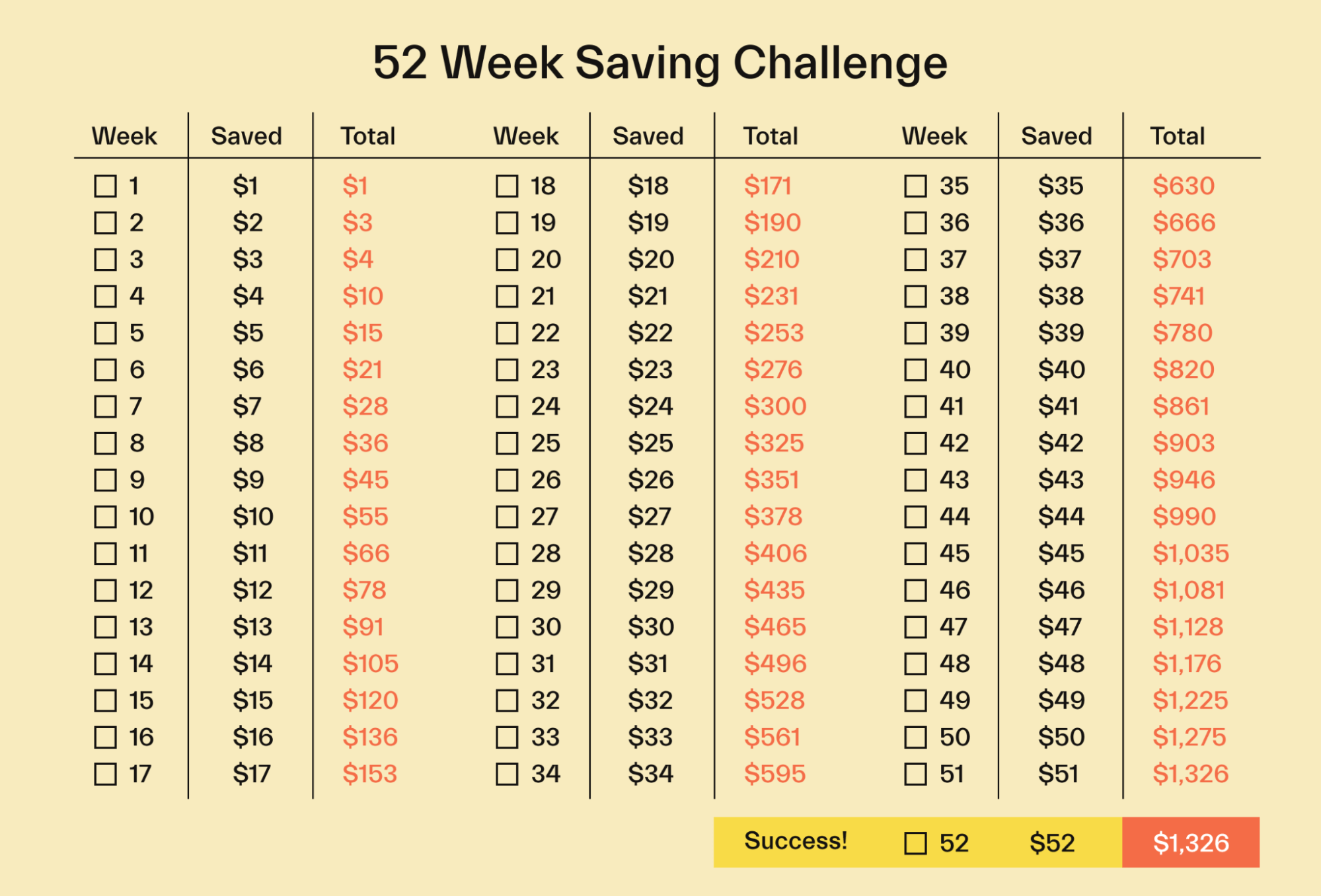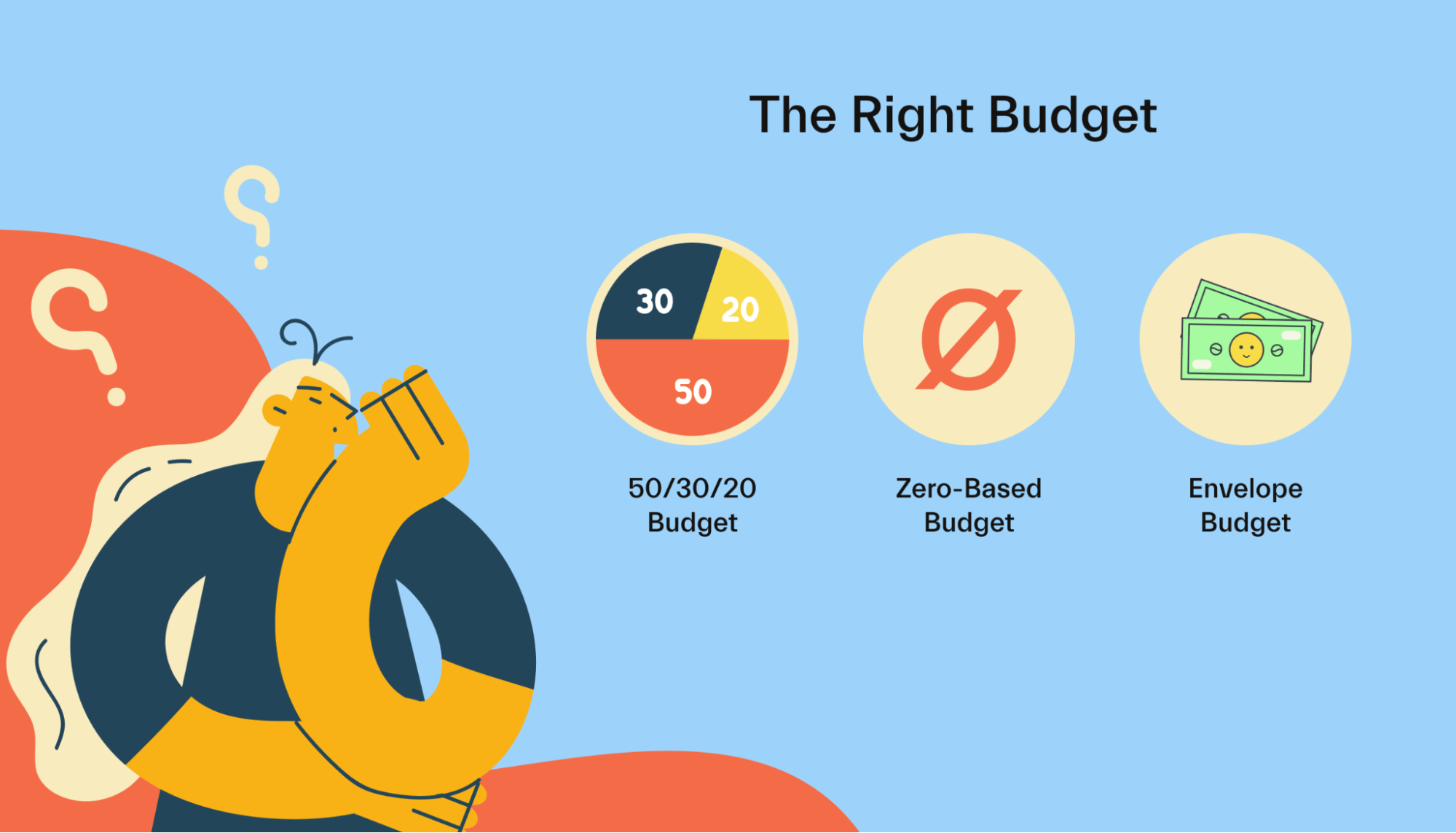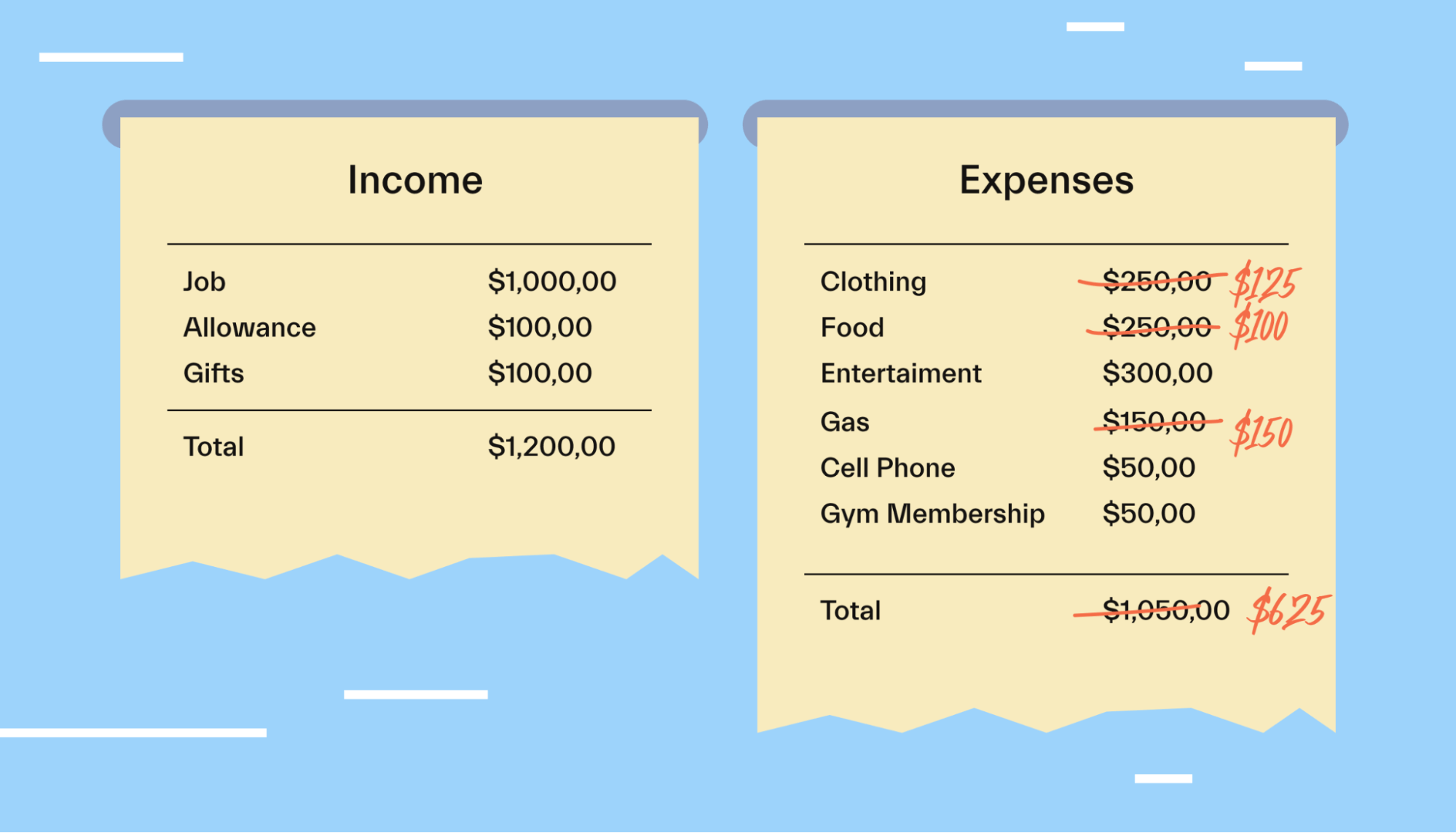Saving •
How to save money as a teenager (and pay for higher education)
Learn how to fatten your bank account with these 10 simple money-saving tips for teens.

As a teen, you're probably not rolling around in piles of cold hard cash. And that's why it's important to save as much as you can.
Look, saving money is a pain whether you're 16 or 60. And let's face it, it's way more fun to spend it than it is to save it. But learning smart money-saving habits as a teen can help you curb financial chaos as an adult.
In this article, we'll help you mature your money-saving skills with 10 simple tips. We'll also show you how to build a basic budget so that you can strengthen your financial discipline and bulk up your bank account.
4 reasons to save money as a teenager
You probably don’t prioritize saving money because you’ve got other things on your mind, like, school, friends, and navigating life in general. But saving money, even in small amounts, comes with some pretty sweet benefits.
For starters…
1. Saving money gives you more independence
As a teenager, you're probably itching for more independence. And one way to achieve it is by having your own money.
If you want to go out with your friends or buy something you really want, you won't have to rely on your parents to foot the bill. Plus, if you prove to your folks you can save money—and spend it wisely—they might reward your maturity with more privileges.
2. You'll learn how much things actually cost
Knowing the value of a dollar and, more importantly, what you can afford with that dollar are 2 important money lessons you'll learn by saving.
Let’s say you find a pair of sneakers for $100.00—a good deal for a new pair of kicks! And let’s say you have a job that pays the federal minimum wage, $7.25 per hour. Before deductions from your paycheck and taxes on the sneakers, you’d need to work almost 14 hours—35% of a 40-hour workweek—to pay for your footwear.
Is it worth trading those working hours to buy these shoes? Do you really need them? Can you find something equally good for cheaper?
These are the questions you’ll start asking once you start saving and learning the true cost of things.
3. You'll have a cushion for unexpected expenses
We all know how much fun teenage years can be (hint: a lot). But they can also be really unpredictable and expensive.
For example, your car might break down, or you may need to pay for last-minute tickets to see your favorite band. If you have savings set aside, you can cover these types of unexpected expenses without going into debt or, worse, borrowing money from your folks.
4. Learning to save now makes your college years less painful
College isn’t cheap! Between tuition, books, supplies, and living expenses, it costs about $35,331 per year. And while you may have scholarships, grants, and student loans to help cover these costs, after you pay them, you won't have much—if any—money left over.
Sharpening your saving and budgeting habits before you go to college makes it easier to live on a shoestring budget—an unavoidable financial reality for most college students.
But what if you didn’t have to live on ramen and schlep to the nearest coffee shop for internet because you can’t afford your own?
Our advisors at Mos can help you get all the financial aid you deserve before you ship off to college. Join Mos and learn how we can match you with scholarships and grants you never even knew existed.
Top 10 money-saving tips for teenagers
Let’s take a look at 10 tips you can use to save money—even if you’re not quite an adult.
1. Open the right bank account
Opening a bank account is a super important first step for building your money-saving skills. A bank account also keeps your money secure and makes it easier to track your spending and savings.
Not all teen bank accounts are created equal. So shop around to find the bank account (and bank) that works for you.
2. Set a savings goal with the 52-week challenge
The 52-week money challenge is a simple and easy way to jumpstart savings. Here’s how it works: You save $1 the first week of the year, $2 the second week, and so on.

By the end of the year, you’ll have saved over $1,300. Not bad!
3. Practice the 30-day rule to prevent impulse purchases
If you’re tempted to make an expensive impulse buy, think about it for 30 days before making a decision. Chances are you’ll lose enthusiasm and avoid buying something you didn’t really want or need.
4. Hide your debit card and pay with cash
Instead of using your debit card to pay for things, withdraw a set amount of cash at the start of every week. This money is everything you're allowed to spend for the next 7 days. And if you spend it all, tough luck—you’ll have to wait until next week for more!

Paying with a plastic card doesn’t have the same impact as physically handing over cold hard cash. Watching your hard-earned money go from your hand to the cashier’s hits a little different, reminding you that money is finite and that you’d better spend it wisely.
5. Make a cash-match pact with your parents
For every dollar you save, ask your parents to match it. You’ll feel motivated to save more money, and you’ll reach your savings goals twice as fast!
6. Embrace student discounts (they add up fast)
Student discounts are the easiest way to save money on everything from food to entertainment to clothing.

Now, not all businesses offer student discounts—especially small businesses—but it's worth asking if they do.
Discount percentages vary from business to business, but it’s not unusual to save 10%+. Sure, 10% might not seem like much, but over time, it adds up.
If you’re really eager to better understand where your money goes, every time you save money with a student discount, keep track of it. This way, you’ll feel motivated to seek out deals and save even more.
7. Pay yourself first
Paying yourself first is often called “the golden rule of saving” because it’s one of the simplest, most effective money-saving strategies. Here’s how it works: if you’ve got a part-time job then, whenever you get paid, transfer a set percentage of your paycheck into savings. That’s it!
Prioritizing saving over spending sounds like common sense. But, 37% of Americans struggle with savings, having less than $400 to cover unexpected expenses. Stashing away money every payday, even if in smaller amounts, is the key to building a financial cushion.
8. Find a budget that works for you
Just because you’re a teen doesn’t mean you can’t learn the motions of budgeting. But it helps when you find a budgeting strategy you’ll stick with.
We’ll show you how to make a simple budget later in this article, but for now, we’ll explore 3 popular budget types to help activate your money-saving powers.

50/30/20 budget: 50% of your money goes to needs, 30% to wants, and 20% to savings. Following the 50/30/20 budget makes “paying yourself first” a heck of a lot easier.
Zero-based budget: Income - [spending + savings] = $0. With a zero-based budget, you account for every last dollar. So if you earn $500/month, your total spending and savings must total $500. If you need to watch your money like a hawk, or you’re looking for a lean college student budget, the zero-based budget works wonders because, with it, you’ll know exactly where your money is going.
Envelope budget: Create a simple monthly budget (we’ll show you how next), and grab one envelope for each expense category you have in your budget. Label each envelope with an expense category, like “clothing,” “video games,” or “eating out,” and fill each envelope with the amount you’ve budgeted for that category.
For example, if you’d budgeted $100 for video games, put $100 in that envelope. Now, when you want to buy a new video game, you have to spend the cash from that envelope—no dipping into other categories. And If you don’t have enough money in the envelope, you can’t afford it.
9. Automate your savings
Want to put your money-saving on autopilot? Set up your bank account to automatically transfer money into savings every time you get paid. This way, the money is tucked away before you even think about spending it.
With automated savings, you'll also unleash the true power of "paying yourself first" and the 50/30/20 budget without even realizing you're doing it. Talk about a win-win.
10. Buckle down with a part-time job
It’s not a shocking revelation, but having a part-time job and earning money is the fastest way to save more money.

Now, a part-time gig or summer job comes with more perks than just extra cash. You’ll develop valuable essential life skills like time management and also learn to appreciate the hard work that goes into earning a paycheck.
And when you realize what it takes to earn money, you may be less willing to part with it so easily!
How to make a simple a teen budget
Even a simple budget can help you level up your finances.
Here, we’ll show you how to create a teen-friendly monthly budget so you can get more comfortable with managing money.
List your sources of money
First, you’ll want to list all of your income sources for the upcoming month. Don’t forget to include money you’ll receive from gifts—grandma’s birthday check still counts as income after all!
Your sources of income might include:
Part-time job
Allowance
Gifts (birthdays, Christmas, etc.)
After you’ve listed all your income sources, predict what you expect to earn from each source. Don’t worry about being 100% accurate, but try to do better than a “ballpark estimate.”
List your expenses
Before you figure out how to budget your expenses for the upcoming month, you need to figure out your spending habits. And the simplest way to do this is by looking at your bank statements, either in print or online. Armed with your bank statements, jot down your expenses from the past 2–3 months.
Next, you’ll want to categorize these expenses. For example, going to the movies or buying a new video game could both be categorized as “entertainment” in your budget.
Your budget categories are entirely up to you. But, in general, you’ll want to group similar expenses into the same category to keep things simple.
Your expenses categories might include:
Clothing
Gas
Entertainment
Eating out
Car expenses (maintenance, repairs)
Now that you have your previous month’s expenses categorized, add up the totals for each category to get an idea of how (and where) you spend your money.
Identify your “money pits” and see where you can start saving
Once you have a list of your income and expenses, you can start to see where your money is going. This information can help you make changes to your spending habits.

For example, if you find that you're spending a lot of money on eating out, you may want to cut back and bring lunch instead. Or, if you're spending too much on clothes, you may want to shop at thrift stores or look for sales.
Tweak your budget month-to-month
At the end of every month, look at how you spent your money and ask yourself these guiding questions:
Was my predicted income accurate?
Did I hit my savings goal?
Where did I overspend?
Where did I underspend?
Where can I adjust my budget so that it’s more accurate for next month?
As a teen, you’ll have variable income and expenses, so it’ll be hard to predict your budget every month. But with more experience, you’ll get better at tracking your budget and tweaking it week-by-week.
Frequently asked questions
Let’s answer a few questions about how to save money as a teenager.
How much money should I be saving as a teenager?
How much you should be saving is up to you. But saving 10–20% of your income is a reasonable amount.
How can a teenager save money without a job?
Saving money without a job might seem impossible, but there are a few things you can do. You can start by looking for ways to earn extra money. For example, you can negotiate an allowance with your parents, work odd jobs for neighbors, or save money you’ve received from birthdays or other special occasions and holidays.
How can a teenager save money each month?
Following the tips outlined in this guide is a great way to boost your savings. At the very least, learn how to budget. Becoming a savvy budgeter will 10x your saving habits like nothing else.
Get started building great saving habits
Saving money can be tricky, especially if you're a teen. But if you follow the simple tips and strategies we've laid out for you, you'll be on your way to a bright financial future.
Remember, start small and increase your savings over time. And always keep your long-term financial goals in mind. With a little effort, you can make saving money easy.
And if you’re heading off to college and would like an advisor to help you steer your finances until you graduate or just lend a helping hand every now and then, Mos is there for you!
Let's get
your money
- Get paired with a financial aid expert
- Get more money for school
- Get more time to do you






